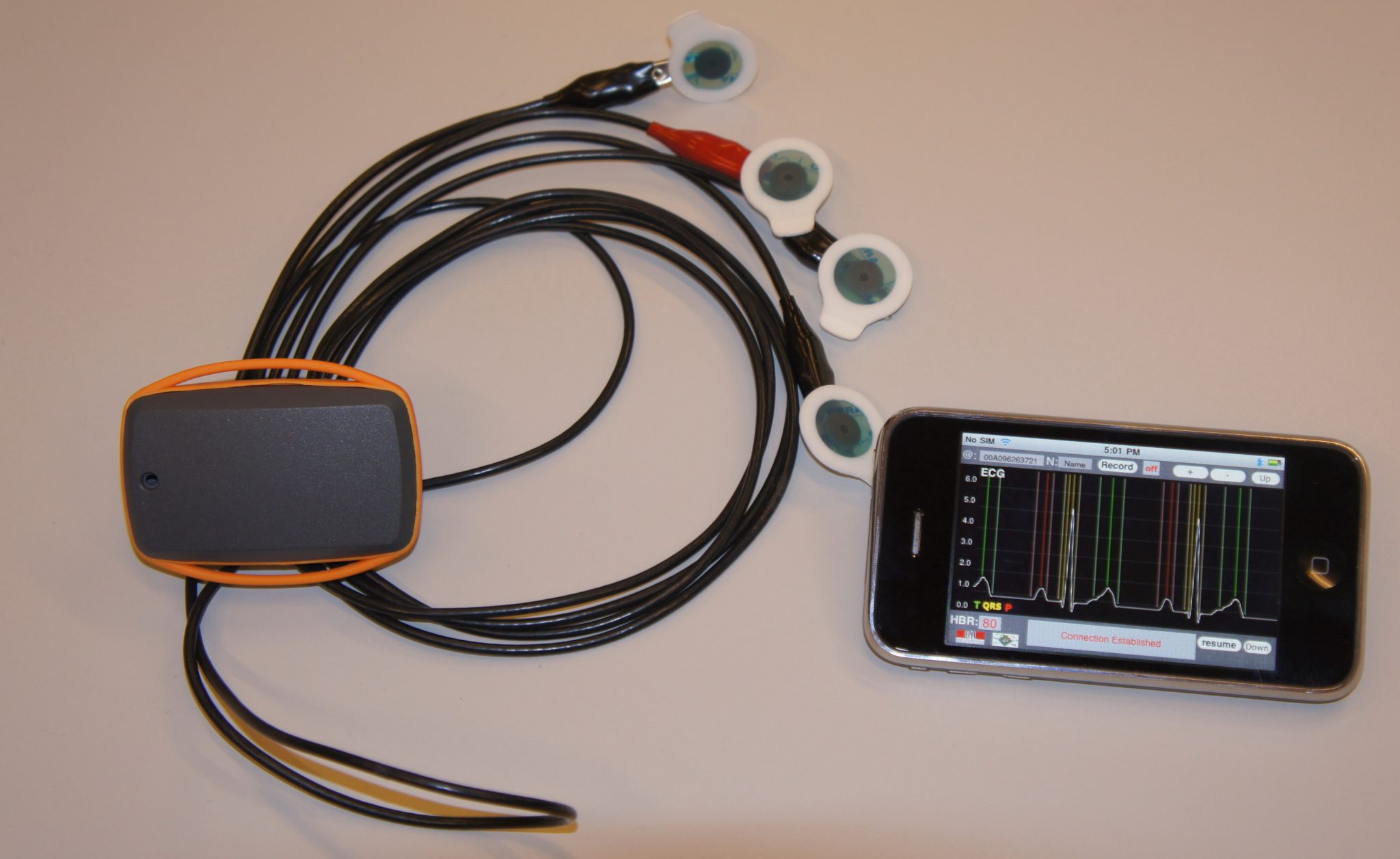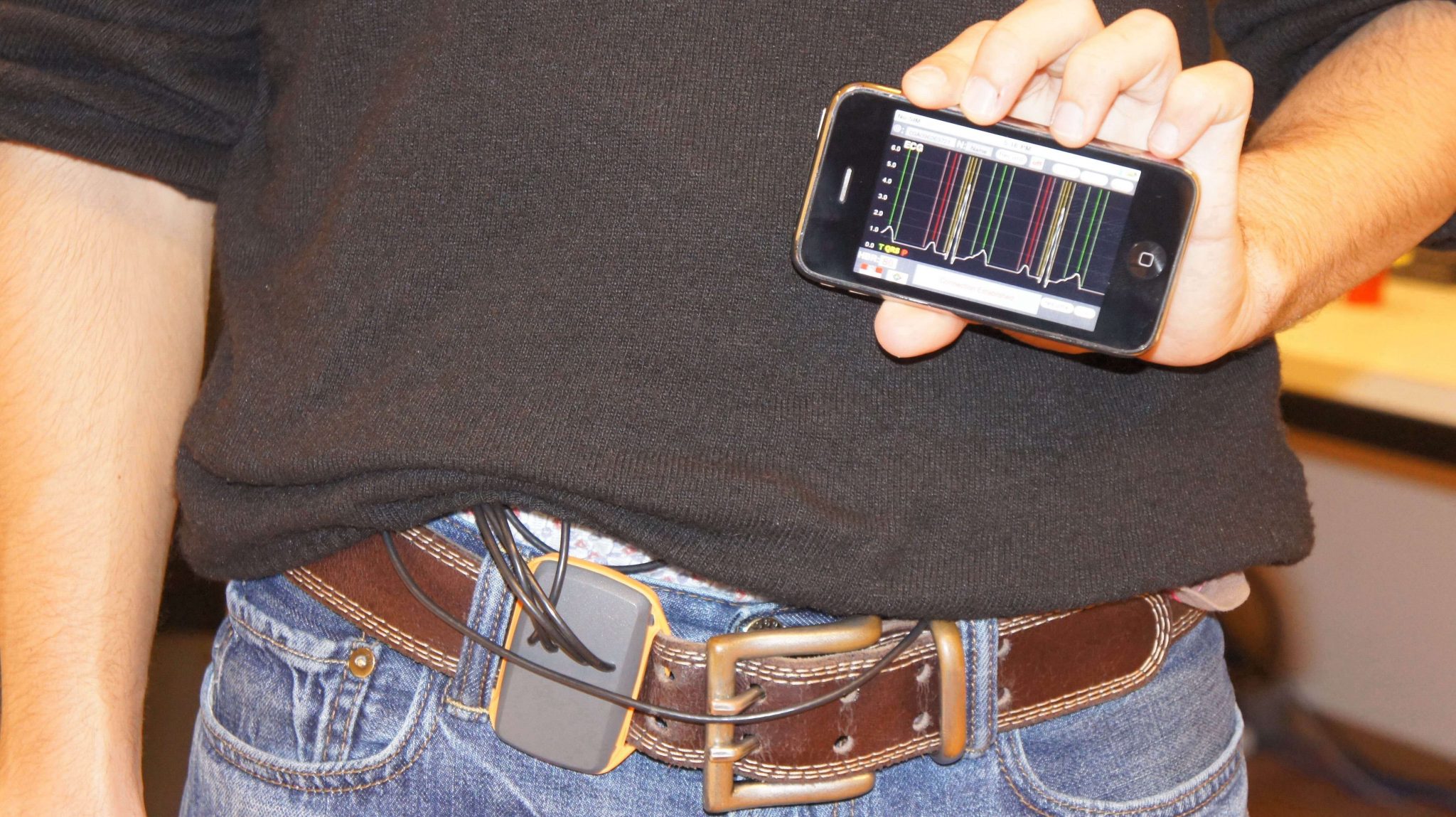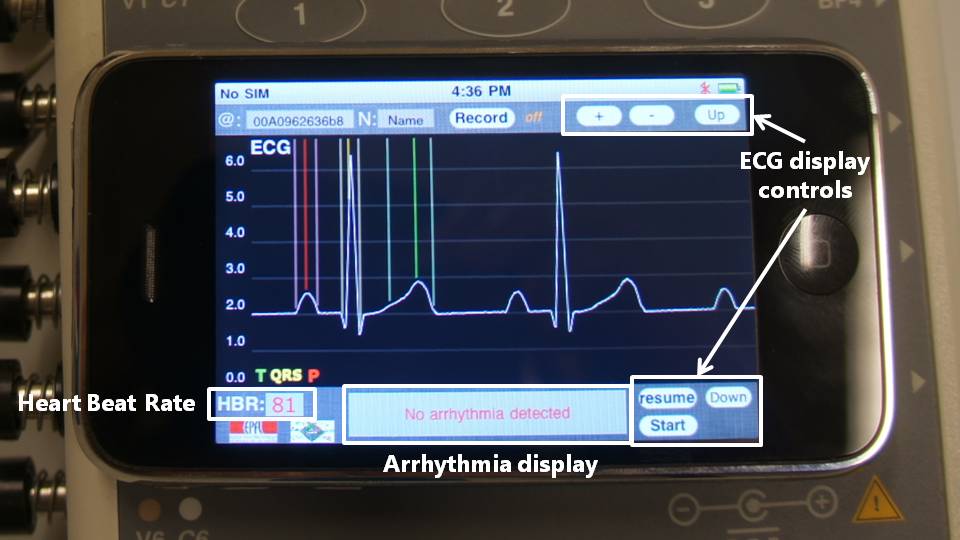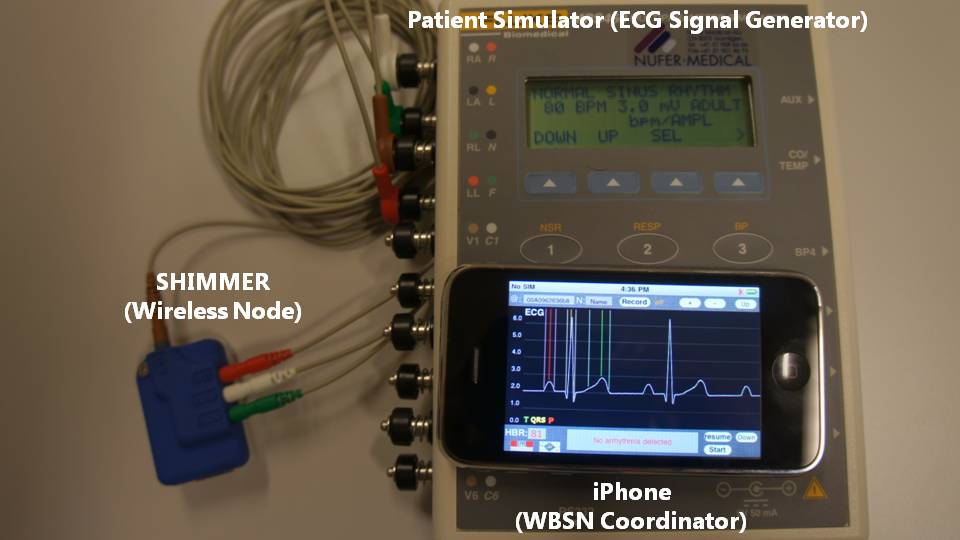Students: Ruben Braojos, Ivan Beretta
Contacts: Dr. Francisco Rincon, Prof. David Atienza
p { margin-bottom: 0.08in; }
Link to CNN news where it is presented the real-time multi-lead automatic arrhythmia detection system of ESL in a WBSN node with its iPhone App interface and noise filtering included as a very promising research innovation on smart real-time biomedical monitoring and automated diagnosis wearable devices.
Motivation
The analysis of the electrocardiogram (ECG) is widely used for diagnosing many cardiac diseases. Since most of the clinically useful information in the ECG is found in the peaks and boundaries of its characteristic or fiducial waves (i.e., the QRS complex, P and T waves), a significant amount of research effort has been devoted to the development of accurate and robust algorithms for automatic detection of the major ECG characteristic waves, so-called ECG wave delineation.
One of the most salient approaches is based on the digital wavelet transform (DWT), mainly because this transform provides a description in the time-scale domain that allows the suitable representation of signals having multiresolution characteristics such as the ECG signal. Indeed, the ECG characteristic waves have different frequency content.
Traditionally, in order to automatically analyze the ECG signal in the long term and extract its fiducial points, the ECG data is recorded during 1 to 5 days for its subsequent offline automatic delineation on a bulky and obtrusive commercial data-logging (Holter) device. Apart from its offline nature, this system suffers from limited autonomy, bulkiness and obtrusiveness. Recently, a great industrial and academic interest has been given to ultra-low-power wireless devices for ECG monitoring, and many platforms have been designed. One of these platforms is the ShimmerTM wireless wearable sensor node, which is able to record and wirelessly transmit 3-lead ECG data. This platform is also equipped with an ultra-low-power Texas Instruments MSP430 microcontroller (8MHz of clock frequency, 10KB of RAM, 48KB of Flash and some peripherals such as analog-to-digital converters, a direct memory access unit and a fast hardware multiplier). However, such an embedded wearable sensor node was never used before to deploy online continuous and automated analysis/delineation of ECG signals. We proved its capabilities for real-time operation (cf. articles at the bottom of the page) and we also have developed our own family of WBSN sensor nodes that can reach even lower overall power figures (see videos below for more details).
Our approach
The purpose of this project is to develop and optimize DWT-based ECG delineation techniques for real-time operation on the ShimmerTM wearable embedded platform. Different implementations are proposed, all of them based on the well known wavelet-based delineation technique, starting from single-lead delineation and moving towards multi-lead implementations that improve the accuracy, stability and resilience to artifacts of the delineation results. Moreover, we carefully optimize these algorithms for efficient execution on the ShimmerTM platform and explore energy and performance trade-offs to achieve two main challenges: 1) maintain good delineation results while performing the delineation in real time; and 2) reduce as much a possible the energy consumption by means of reducing the wireless communication and the execution time.
Once the delineation algorithm extracts the characteristic points of the ECG signal, their timing and morphological information is analyzed to diagnose a set of cardiac problems directly related to alterations in the heart’s electric activity such as abnormal conduction in different parts of the heart or problems in the depolarization or repolarization phases.



p { margin-bottom: 0.08in; }
The delineation results and (optionally) the ECG signal, are transmitted in real-time to an iPhone, for high quality graphical representation. See in trhe following video how the system works in real-time with the doctors:
Related video: Tracking heart rate in real time on a smartphone
Embed of video is only possible from Mediaspace, Vimeo or Youtube
<!–
RODOLPHE INSERT HERE THE VIDEO
–>
This is a complete demonstration of the functionality of the WBSN system for real-time ECG analysis developed at ESL-EPFL:
Embed of video is only possible from Mediaspace, Vimeo or Youtube
p { margin-bottom: 0.08in; }
This is an additional example of the advanced real-time ECG software we have developed for our WBSN system while operating with the limited resources on the Shimmer Wireless Node:

Publications
-
F. Rincon, J. Recas, N. Khaled and D. Atienza, “Development and Evaluation of Multi-Lead Wavelet-Based ECG Delineation Algorithms for Embedded Wireless Sensor Nodes“, accepted for publication in IEEE Transactions on Information Technology in BioMedicine (TITB), 2011.
-
F. Rincon, N. Boichat, V. Barbero, N. Khaled and D. Atienza, “Multi-Lead Wavelet-Based ECG Delineation on a Wearable Embedded Sensor Platform, Computers in Cardiology, vol. 36, nr. 9, pp. 289 – 292, September 2009.
-
N. Boichat, N. Khaled, F. Rincon and D. Atienza, “Wavelet-Based ECG Delineation on a Wearable Embedded Sensor Platform“, 6th IEEE International Workshop on Body Sensor Networks (BSN 2009), Berkeley, USA, June 3rd – 5th, 2009.
Related video: A Real-Time Wavelet-Based Electrocardiogram Delineation System
Embed of video is only possible from Mediaspace, Vimeo or Youtube